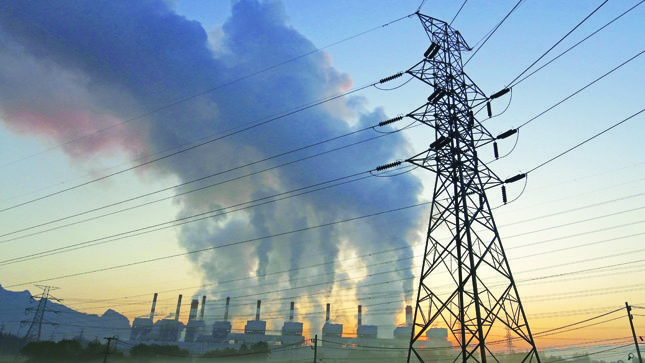Waving the “I’m not a scientist” banner, 169 Republican members of Congress are on record denying the overwhelming scientific consensus that manmade greenhouse gas emissions are harming the environment, with increasingly devastating consequences.
But Republican leaders will not be able to ignore two forces lining up against them: the free market and their own voters, both warning that climate change is too important to be a partisan issue.
A recent Yale analysis of Republican voters found that 52 percent not only believed in climate change, but wanted the government to reduce fossil fuel emissions. In another poll, 48 percent of Republicans said they’re more likely to vote for candidates who advocate fighting climate change.
Meanwhile, the world’s leading expert on extreme weather – the insurance market – is signaling red alert about climate change. In a recent survey of how 330 major carriers, Ceres, a coalition of investors and others promoting sustainable businesses, reported that insurers have opted to “limit coverage or entirely withdraw from certain catastrophe-prone markets, especially coastal regions, such as Long Island, Virginia, Delaware and Florida.”
Nervous over the growing payouts stemming from hurricanes and other storms, state insurance regulators are warning carriers about climate change’s impact on their solvency. More than 6.5 million American homes are exposed to storm surges – with a value at risk of nearly $1.5 trillion, according to a 2014 Corelogic report.
Some pragmatic Republicans are finally confronting the challenge of formulating a position on climate change that respects the intelligence of their voters without alienating wealthy donors tied to the fossil fuel businesses.
Here are some proposed recommendations for such an approach – stressing pro-market, business-minded solutions:
Grab the low-hanging fruit: When I started in the solar lighting business 25 years ago, solar panels were $5 a watt; today they’re 50 cents. In recent years, the price of solar-fueled electricity has dropped so much that in many locations and for many uses, it’s now cheaper on a lifetime basis than grid power fueled by fossil fuels. In Southern California, solar rooftop systems will soon allow for a three-year payback, after which electricity will be essentially free.
As a solar investor, I see amazing market opportunities in next generation remedies. For instance, innovative battery technology is cutting electricity prices in many areas where the grid has limited capacity. In Hawaii, home to the nation’s highest electricity rates, customers might use only half their rooftop solar system to power a constrained grid (because the capacity constrained grid couldn’t absorb more electricity from that location).
By using the other half to charge a battery, which releases stored energy during the night, you can double the usable solar power – reducing the state’s carbon footprint and lowering users’ energy costs.
What’s missing is the political will to grab such opportunities to turn the U.S. into the global leader in alternative energy. Unfortunately, state regulators tend to side with traditional utilities, while federal subsidies (including 25% of our defense budget) to fossil fuel companies keep electricity costs below true market levels.
Embrace a revenue neutral carbon tax, where a portion is used to lower the current corporate tax rate and the balance used to reduce middle class taxes (as but one variation) will dramatically cut the amount of CO2 in the air, while increasing jobs and dramatically increase U.S. competitiveness.
The beauty of such a tax is that over 10 years it could generate up to two trillion dollars for other purposes, including funding a 10 percent reduction in the current 35 percent corporate tax rate. The rest could be returned to lower income Americans for whom energy costs represent a bigger chunk of their expenses.
Economists on both sides support this plan, as do conservative think tanks, such as R-Street and Taxpayers for Common Sense; a new non-profit, Partners for Responsible Growth, has been formed to build bipartisan support.
Follow the capital: Hundreds of corporations, institutional investors, banks and private equity funds are re-defining the nature of a “good business” as one that focuses on two bottom lines – profit, plus a measurable impact on social or environmental problems.
In an effort to combine my personal commitment to sustainability with my career as an entrepreneur, I decided in 1990 to invest in a struggling outdoor solar lighting company. I continued to cover its losses because I was convinced that alternative energy would create huge profits. Eventually we combined with a stronger sustainable partner (where I am Chairman) and the combined business are flourishing.
Increases in “impact investing” like this have been astonishing: A 2014 report on 125 major funds by J.P. Morgan and the Global Impact Investing Network found $46 billion in impact investments, a nearly 20 percent increase from the prior year. Legislatures in 27 states have enacted “benefit corporations.” Ceres’ Investor Network for Climate Crisis has 100-plus members with more than $13 trillion in assets, including Blackrock and Calpers.
Forcing business to choose between prosperity and the environment is misguided. “I’ve confronted this argument for the past 30 years as an environmental advocate,” Robert F. Kennedy Jr., president of Waterkeeper Alliance, recently told a meeting of investors. “Protecting the environment is an investment in infrastructure, the same as telecommunications or road construction – to maintain our economic vitality for future generations.”
I’m old enough to remember when protecting the environment was a bi-partisan issue. Richard Nixon created the EPA in 1970; and George H.W. Bush campaigned in 1988 as “the environmental President.” Swearing in his new EPA administrator, President Bush noted that what both parties shared was a desire for “economic growth and a clean environment.” Ready to make good on that promise are impact investors like myself eager to deploy billions of dollars for exciting market returns, generating alternative energy innovations that will unleash a hundred times more capital to fund the big solutions needed to beat climate change.
